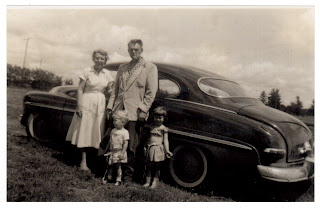 |
| Church of the Brethren logo |
Wilhelmus Knepper (1691-1767), born in Solingen, Westphalis, Germany, is the son of Hans Peter Knepper (1658-1737). Hans is the 8th great grandfather of my daughter-in-law Melissa Murphy Oliver, and Wilhelmus is Melissa’s 7th great-granduncle.
During this time, Germany only recognized the Roman Catholic and Lutheran churches. Other religions were banned, and people were imprisoned for not being a member of one of these two religions. However, there were others who did not follow the beliefs of these two churches: Today’s Church of the Brethren developed because of religious dissent.
The Church of the Brethren was founded in 1708. Members of this church believed in adult baptism—separating them from the recognized state religions. The followers of this church referred to themselves as the “brethren.”
Originally, Wilhelmus was a member of the Reformed Lutheran Church, being baptized on October 27, 1691. However, in 1719, at the age of 23, he joined the Dunkard Church, also known as the German Baptist Church—today’s Church of the Brethren. During the same year, Wilhelmus, and four other members of the Church of the Brethren, were arrested and taken to Dusseldorf to be tried for the religious crime of adult baptism.
Wilhelmus, and the other, refused to recant their beliefs; thus, they were sentenced to hard labor in Solengen Prison, Julich, Germany. A weaver by trade, Wilhelmus learned to make buttons, which he and the others sold for the goods they needed to survive; i.e., food and clothing. Additionally, while in prison, Wilhelmus composed about 400 hymns.
After one year, Wilhelmus, and the others, were released on November 20, 1720. Because of the religious persecution the “brethren” were receiving, these religious dissenters had been resettling in the Netherlands where there was better tolerance. Wilhelmus, and the other men who had been imprisoned with him, also went to the Netherlands. While in the Netherlands, Wilhelmus met and married his wife Veronica Bloem (1702-1769).
Because of increasing religious persecution, the “brethren” emigrated to North America. On July 7, 1729, a large group left the Netherlands with a large group Sailed on the Shill Allen, captained by James Craigie: Wilhelmus and Veronica Knepper were part of the group. The ship arrived on September 15, 1729, settling in Ephrata, Pennsylvania Colony.
Veronica and Wilhelmus had five children; the two listed below helped to advance the Church of the Brethren:
- Mary (1725-died after 1807) married George Adam Martin (1712-1794), a controversial German Baptist Church minister, from which he was ex-communicated. He then became a minister of the Seventh-Day German Baptists. In 1764, he conducted a successful revival in the Antietam settlement, which gave birth to the present Snow Hill Society of German Seventh-Day Baptists. He also founded a church at Stony Creek, Somerset County, Pennsylvania, where he is buried.
- Elisabeth (1740-1807) never married. In her will Elizabeth left land for use as a meeting-house and graveyard. This gift is part of the present Mount Zion Cemetery in Quincy Township. A small meeting-house was built on the donated in 1837 and was used in turn by the German Baptists and Seventh-Day German Baptists. In 1888 the building was replaced and used as a church by the German Baptists, Seventh-Day German Baptists, and Old Order German Baptists. Like her father, Elizabeth she also wrote hymns. She is among many family members buried in the Mount Zion Cemetery graveyard.
Thomas Paine, one of our “found fathers” said the following: “Persecution is not an original feature in any religion; but it is always the strongly marked feature of all religions established by law. Wilhelmus Knepper’s story supports Paine's statement.






